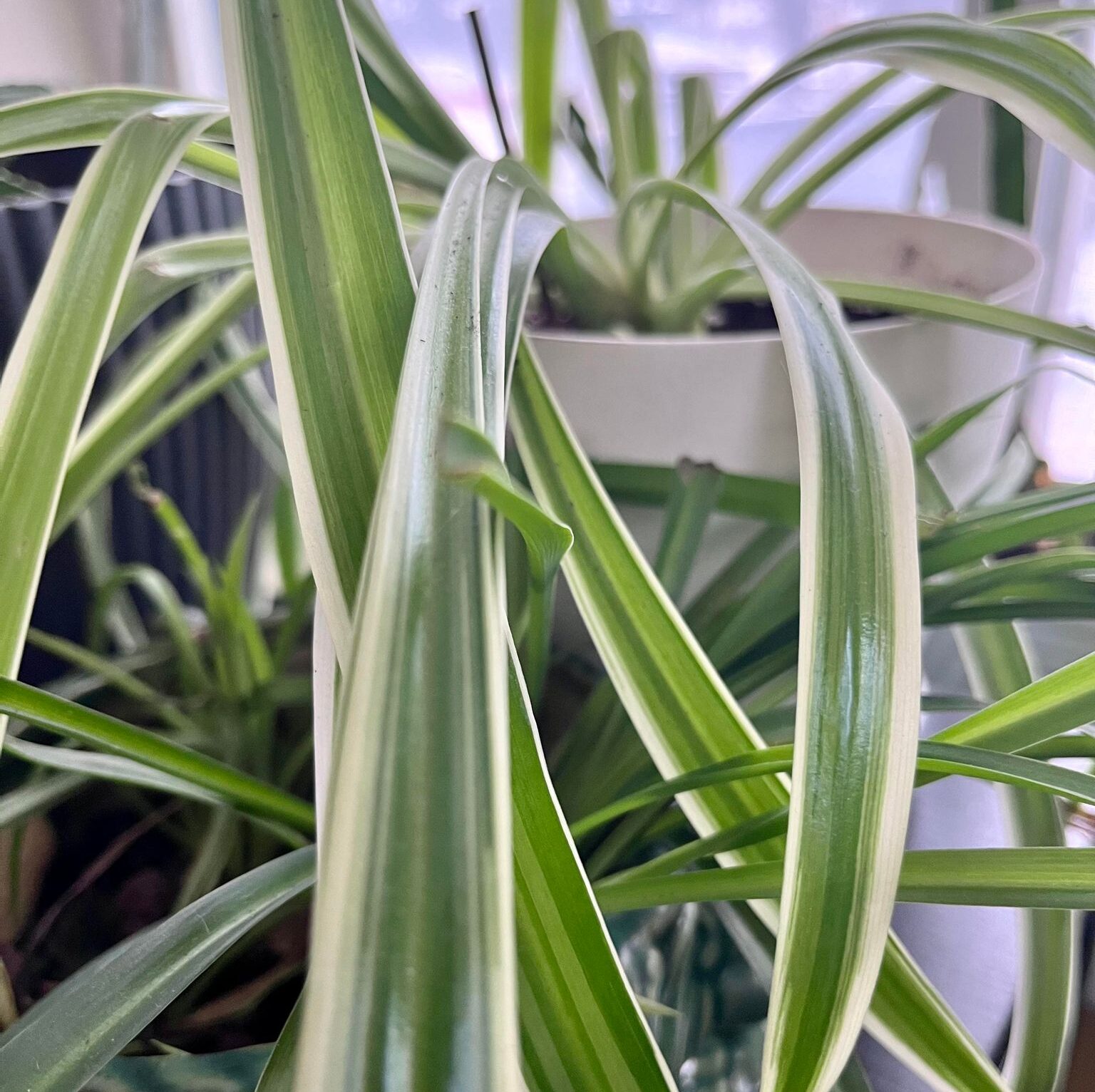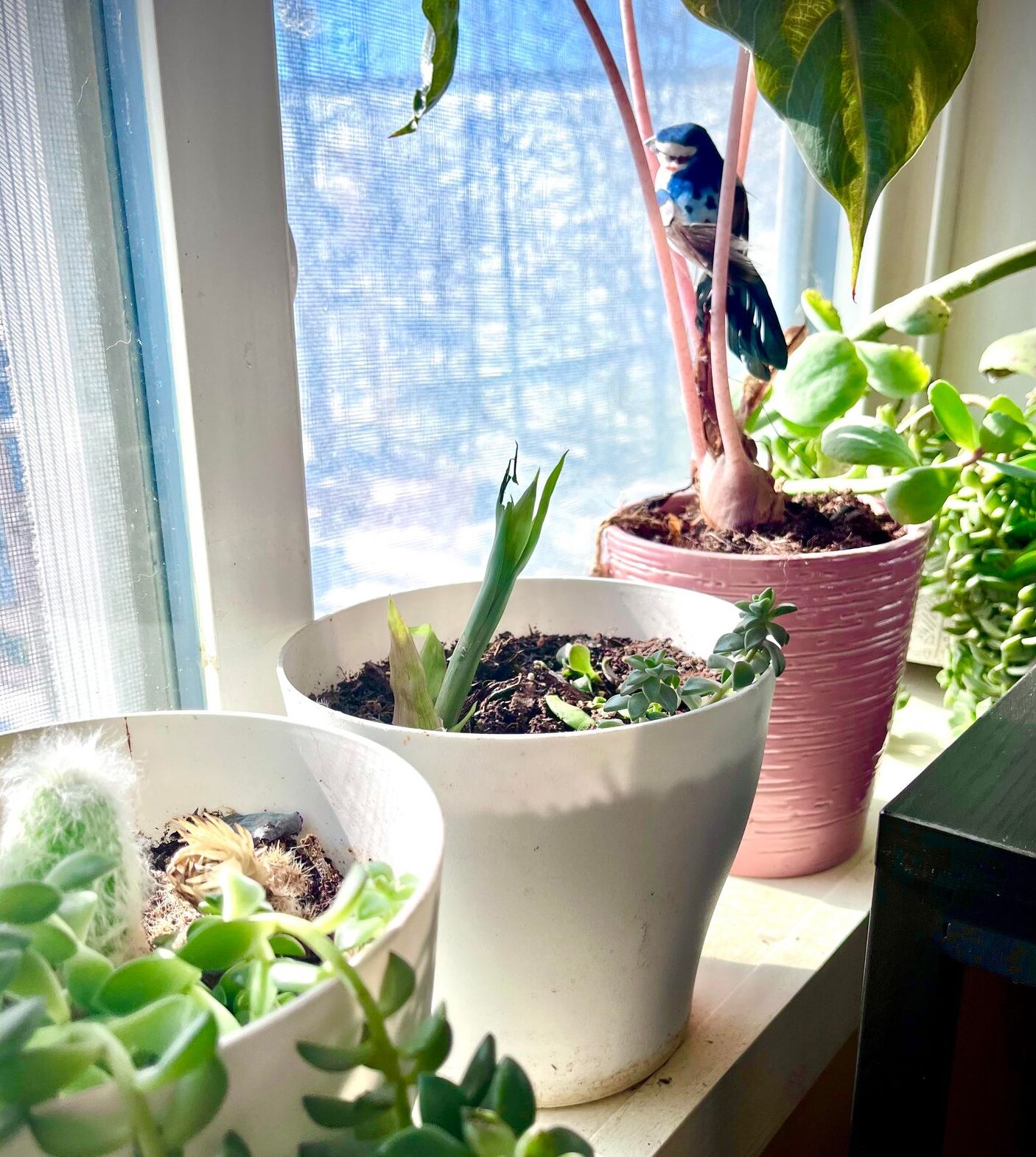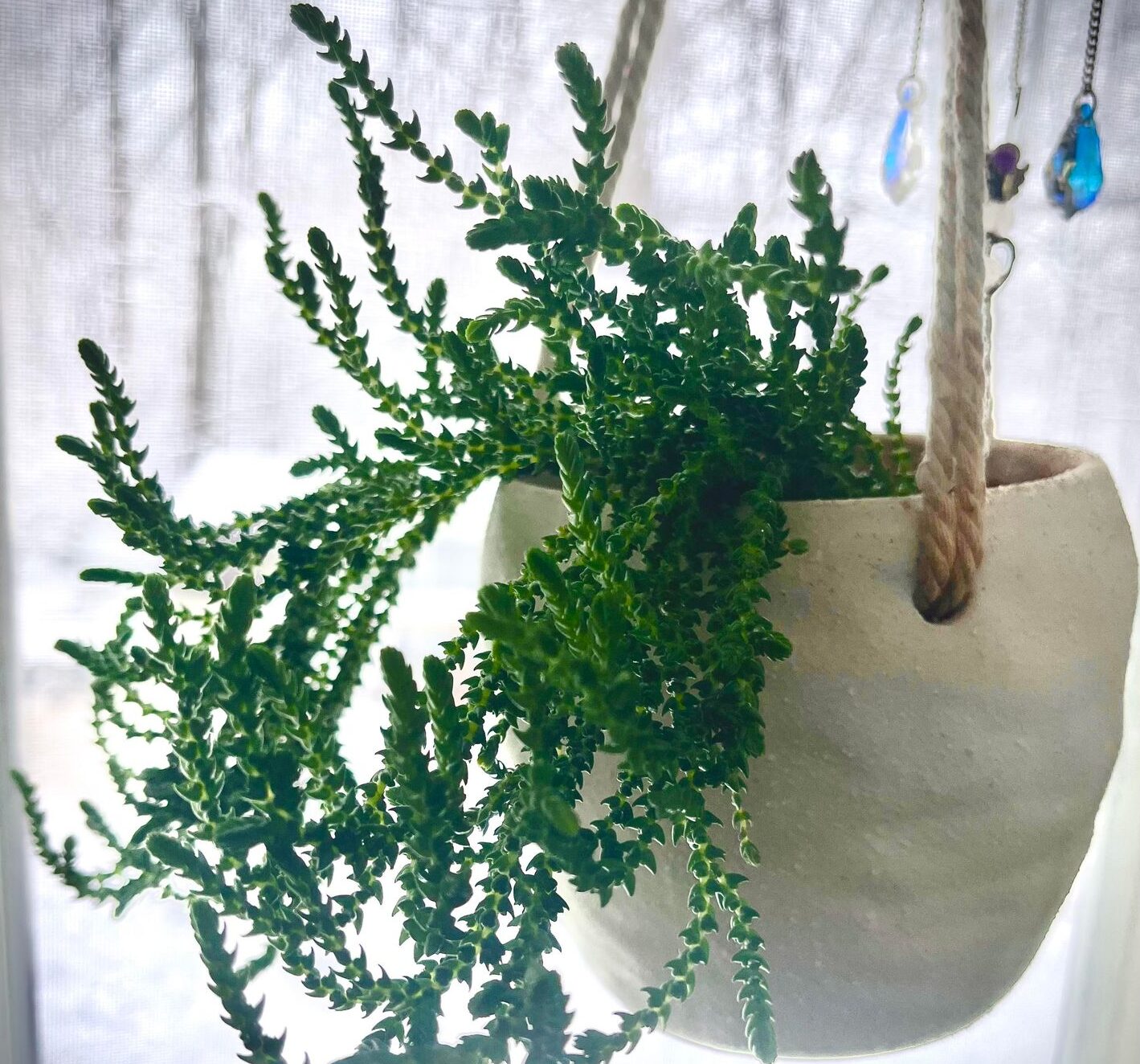
Tropical Pitcher Plant – Nepenthes Diana Care and Propagation Guide
Nepenthes Diana Care and Propagation Guide
Welcome to the captivating world of Nepenthes Diana, the Tropical Pitcher Plant that will transport you to a lush, green paradise right within the confines of your indoor garden. Whether you’re a seasoned plant enthusiast or just starting your journey into the realm of indoor gardening, this comprehensive guide will equip you with all the knowledge you need to care for and propagate this remarkable plant.
Nepenthes Diana is not your ordinary houseplant; it’s a botanical wonder known for its striking appearance and unique survival tactics. In this blog post, we will delve into the intriguing characteristics of Nepenthes Diana and explore the art of providing it with the care it deserves. We’ll also uncover the secrets to successfully propagating new plants, allowing you to expand your green oasis and share the beauty of this species with others.
Whether you’re drawn to Nepenthes Diana for its exotic allure or simply wish to elevate your indoor gardening skills, you’ve come to the right place. By the end of this guide, you’ll be well-prepared to create an environment where Nepenthes Diana flourishes and multiplies, bringing a touch of tropical wilderness into your home.
So, let’s embark on this exciting journey of discovery, as we unlock the mysteries of Nepenthes Diana care and propagation. Get ready to nurture and propagate these incredible plants, and witness the enchanting beauty of this botanical wonder unfold before your eyes.
Getting to Know Nepenthes Diana
Before you embark on the journey of caring for and propagating Nepenthes Diana, it’s essential to acquaint yourself with this extraordinary tropical pitcher plant. Understanding its unique characteristics and why it’s a prized addition to indoor gardens will deepen your appreciation for this remarkable species.
Description of Nepenthes Diana – A Tropical Pitcher Plant
Nepenthes Diana, also known as the Tropical Pitcher Plant, is a visually striking member of the Nepenthaceae family. Native to the rainforests of Southeast Asia, this carnivorous plant stands out for its captivating appearance. Its leaves are unlike those of typical plants; they have evolved into specialized structures called “pitchers.”
These pitchers are the hallmark of Nepenthes Diana’s allure. They come in various shapes and sizes, often displaying intricate patterns and colors that lure unsuspecting insects. The unique design of these pitchers serves a dual purpose: they capture prey for nourishment and provide a home for a host of symbiotic organisms, creating a self-contained ecosystem.
Fascinating Characteristics of Nepenthes Diana
- Carnivorous Nature: Nepenthes Diana is a carnivore, primarily feeding on insects and other small prey. Its pitchers are equipped with slippery surfaces, enticing nectar, and a deadly digestive fluid that breaks down captured organisms to extract essential nutrients.
- Variety of Species: The Nepenthes genus comprises numerous species, each with its distinct features. Nepenthes Diana, with its alluring pitchers, ranks among the most captivating members of this diverse family.
- Adaptability: While native to tropical rainforests, Nepenthes Diana has adapted to a range of environments. This adaptability makes it an excellent choice for indoor cultivation, provided you can mimic its preferred conditions.
Why Choose Nepenthes Diana for Your Indoor Garden
- Aesthetic Appeal: Nepenthes Diana’s striking appearance makes it a captivating addition to any indoor garden. Its pitchers come in an array of shapes and colors, from deep reds to vibrant greens, creating a visually stunning display.
- Educational Value: For both adults and children, cultivating Nepenthes Diana can be an educational experience. Observing the plant’s carnivorous behavior, from capturing prey to nutrient absorption, offers a unique insight into the world of botany and ecology.
- Natural Pest Control: Beyond its beauty and educational value, Nepenthes Diana serves as a natural pest controller in your indoor space. It attracts and captures insects, helping to reduce the presence of unwanted pests.
Now that you’re acquainted with the allure of Nepenthes Diana, let’s dive deeper into the specifics of caring for this captivating tropical pitcher plant in the following sections.
Creating the Ideal Environment
To thrive and flourish, Nepenthes Diana requires a carefully curated environment that mimics its natural habitat. Providing the right conditions ensures that your tropical pitcher plant remains healthy and vibrant. In this section, we’ll explore the key factors to consider when creating the perfect environment for your Nepenthes Diana.
Light Requirements for Nepenthes Diana
Nepenthes Diana is a light-loving plant, but it has specific preferences when it comes to illumination. Here’s what you need to know:
- Bright, Indirect Light: Place your Nepenthes Diana in a location where it receives bright, indirect sunlight. Avoid exposing it to direct sunlight, especially during the hottest parts of the day, as this can scorch the delicate leaves.
- Artificial Lighting: If natural light is limited, consider supplementing with artificial grow lights designed for carnivorous plants. The spectrum provided by these lights facilitates photosynthesis and growth.
Temperature and Humidity Considerations
Maintaining the right temperature and humidity levels is crucial for Nepenthes Diana’s well-being:
- Temperature Range: Nepenthes Diana thrives in a temperature range of 70-85°F (21-29°C) during the day and a slight drop in temperature at night. Avoid exposing it to temperature extremes, such as cold drafts or prolonged heat above 90°F (32°C).
- High Humidity: This tropical pitcher plant thrives in high humidity levels. Aim for humidity levels between 50% to 60% or higher. The humidity of your plant can be enhanced by misting it, placing a humidifier nearby, or using a humidity tray.
Choosing the Right Pot and Soil
Selecting the appropriate pot and soil is vital for your Nepenthes Diana’s success:
- Pot Selection: Opt for a pot with good drainage, as Nepenthes Diana is sensitive to waterlogged roots. A plastic or ceramic pot with drainage holes is an excellent choice.
- Potting Mix: Use a well-draining potting mix consisting of sphagnum moss, perlite, and pine bark. Avoid standard garden soil, as it retains too much moisture and can lead to root rot.
- Avoid Fertilizers: Nepenthes Diana derives its nutrients from captured prey, so there’s no need for traditional fertilizers. In fact, fertilizers can harm the plant. Stick to feeding it with insects or other prey, as nature intended.
By carefully considering these factors and creating an environment that meets Nepenthes Diana’s specific needs, you’ll set the stage for a thriving and healthy tropical pitcher plant. In the next section, we’ll delve into the crucial aspects of watering and feeding this captivating carnivorous plant.
Watering and Feeding Nepenthes Diana
Nepenthes Diana, as a carnivorous plant, has unique watering and feeding requirements that differ from typical houseplants. Mastering these aspects is essential for the well-being of your tropical pitcher plant.
Watering Schedule and Techniques
- Keep Soil Moist: Nepenthes Diana prefers consistently moist but not waterlogged soil. Water your plant when the top inch (2.5 cm) of the potting mix begins to dry. Always use distilled or rainwater, as tap water may contain minerals that can harm the plant over time.
- Watering Technique: Water your Nepenthes Diana from below by placing the pot in a tray of water. Allow the plant to soak up water through its roots. Empty any excess water from the tray after about 20 minutes to prevent waterlogging.
- Avoid Overwatering: It’s crucial not to overwater, as excessively wet conditions can lead to root rot. Pay attention to the moisture levels in the soil and adjust your watering frequency accordingly.
Understanding the Unique Feeding Habits
Nepenthes Diana is a carnivorous plant that relies on capturing and digesting prey to obtain nutrients. Here’s how to cater to its dietary needs:
- Prey Attraction: The pitchers of Nepenthes Diana are designed to attract insects. Their colors, nectar secretions, and slippery surfaces lure unsuspecting prey into the trap.
- Feeding Frequency: While your plant can capture insects on its own, you can help by providing supplementary prey. Small insects, such as fruit flies or gnats, make ideal offerings. Gently place them inside the pitcher, and nature will take care of the rest.
- Do Not Overfeed: Avoid overloading your Nepenthes Diana with prey. One or two insects per pitcher every few weeks should suffice, depending on the size and age of the plant. Overfeeding can lead to rotting prey and harm the plant.
- Monitor Pitcher Health: Keep an eye on the condition of the pitchers. They should be clean, free of debris, and able to seal shut. If a pitcher becomes damaged or dies off, you can gently trim it to encourage new growth.
By following these watering and feeding guidelines, you’ll ensure that your Nepenthes Diana thrives in its carnivorous lifestyle. This unique plant is not just a beautiful addition to your indoor garden but also an intriguing natural pest control solution. In the next section, we’ll explore the importance of pruning and maintenance to keep your tropical pitcher plant healthy and vibrant.
Pruning and Maintenance
Maintaining the health and vitality of your Nepenthes Diana requires regular attention and care. Pruning and addressing potential issues are essential aspects of ensuring that your tropical pitcher plant thrives in your indoor garden.
Regular Pruning for Healthy Growth
- Remove Dead or Dying Pitchers: As your Nepenthes Diana matures, some pitchers may naturally wither and die off. It’s important to remove these spent pitchers carefully. Use clean, sharp scissors or pruning shears to trim them at the base without damaging the healthy foliage.
- Encourage New Growth: Pruning can stimulate new growth and enhance the overall appearance of your plant. Trim any excessive or overgrown vines to maintain a balanced shape and size.
- Inspect for Pests and Diseases: During pruning, take the opportunity to closely inspect your plant for any signs of pests or diseases. Early detection is important for addressing issues promptly.
Dealing with Pests and Diseases
- Pest Control: Nepenthes Diana is relatively resilient to pests, thanks to its carnivorous nature. However, occasional pests like aphids or mealybugs may still appear. If you notice pests, remove them manually or consider introducing natural predators like ladybugs.
- Fungal and Bacterial Issues: Be vigilant for any signs of fungal or bacterial diseases, such as leaf spots or rot. Ensure good air circulation and avoid overcrowding your plants to prevent these issues. If problems persist, consult a plant specialist or use appropriate treatments.
- Isolate Infected Plants: If you suspect a severe pest infestation or disease, isolate the affected plant to prevent the issue from spreading to other plants in your indoor garden.
Tips for Keeping Nepenthes Diana Thriving
- Maintain Consistent Care: Nepenthes Diana thrives on consistency. Ensure that you maintain a steady watering schedule, appropriate light levels, and high humidity levels.
- Repotting: Repot your Nepenthes Diana every 2-3 years, as it outgrows its current pot. This allows you to refresh the potting mix and provides additional space for growth.
- Avoid Disturbance: Nepenthes Diana doesn’t appreciate being moved or disturbed frequently. Find a suitable location for your plant and try to keep it there unless absolutely necessary.
By incorporating these pruning and maintenance practices into your care routine, you’ll be well-equipped to keep your Nepenthes Diana thriving and free from common issues. In the next section, we’ll delve into the art of propagating Nepenthes Diana, allowing you to expand your collection and share the beauty of this unique tropical pitcher plant with others.
Propagating Nepenthes Diana
If you’ve fallen in love with your Nepenthes Diana and want to share its beauty or expand your collection, propagating this tropical pitcher plant is a rewarding endeavor. In this section, we’ll explore various propagation methods and provide a step-by-step guide to help you successfully propagate Nepenthes Diana.
Understanding Different Propagation Methods
Nepenthes Diana can be propagated through several methods, each with its advantages and considerations:
- Vegetative Propagation: This method involves taking cuttings from the parent plant and encouraging them to root. It’s one of the most common and reliable ways to propagate Nepenthes Diana.
- Leaf Pulling: Some Nepenthes species can be propagated by carefully pulling off a leaf and allowing it to develop new plantlets. However, this method is less common with Nepenthes Diana.
- Seed Propagation: While possible, growing Nepenthes Diana from seeds is more challenging and time-consuming. It’s an option for experienced growers looking to diversify their collection.
Step-by-Step Guide to Propagating from Cuttings
Here’s a step-by-step guide to propagating Nepenthes Diana from cuttings:
Materials You’ll Need:
- Sterile-cutting tools (e.g., scissors or pruning shears)
- Small pots or containers
- Fresh potting mix
- Plastic bags or a propagation chamber
- Distilled or rainwater
- A healthy Nepenthes Diana plant for cuttings
Propagation Steps:
- Select a Healthy Parent Plant: Choose a mature and healthy Nepenthes Diana plant from which to take cuttings. Look for vigorous growth and well-formed pitchers.
- Take Cuttings: Using sterile cutting tools, carefully take cuttings from the parent plant. Each cutting should include a section of the stem with at least one leaf and a portion of the vine. Aim for cuttings that are approximately 4-6 inches (10-15 cm) in length.
- Prepare Pots: Fill small pots or containers with a fresh potting mix suitable for Nepenthes, ensuring good drainage. Make a hole in the center of each pot for planting the cuttings.
- Plant the Cuttings: Insert the cuttings into the prepared holes in the potting mix, ensuring that at least one node (the point where leaves and tendrils attach to the stem) is beneath the soil. Gently press the soil around the cuttings to secure them.
- Create a Humid Environment: To promote root development, cover the pots with plastic bags or place them in a propagation chamber to maintain high humidity around the cuttings. Mist the cuttings occasionally to keep the environment humid.
- Provide Indirect Light: Place the pots with cuttings in a location with bright, indirect light. Avoid direct sunlight, which can be too harsh for young plants.
- Monitor and Wait: Over the next few weeks to months, monitor the cuttings for signs of new growth and root development. Once the cuttings have established roots and are growing well, you can gradually acclimate them to lower humidity conditions.
- Transplant: When the young plants have grown sufficiently, transplant them into larger pots with your standard Nepenthes potting mix. Continue to care for them as mature Nepenthes Diana plants.
Tips for Successful Propagation
- Patience is Key: Propagating Nepenthes Diana can take time, so be patient and attentive to the needs of the young plants.
- Maintain Consistency: Consistently provide the right conditions in terms of light, humidity, and watering during the propagation process.
- Experiment and Learn: Propagation can vary based on your specific environment and conditions. Don’t be afraid to experiment with different methods to find what works best for your plants.
By following this propagation guide and understanding the different methods available, you can successfully multiply your Nepenthes Diana plants and share their beauty with fellow indoor gardeners. In the next section, we’ll address common issues that you may encounter while caring for these unique tropical pitcher plants.
Troubleshooting Common Issues
Even with the best care and attention, you may encounter challenges while growing Nepenthes Diana. Being aware of potential issues and knowing how to address them is crucial for ensuring the health and vitality of your tropical pitcher plant. In this section, we’ll discuss common problems and provide solutions to help you troubleshoot effectively.
Yellowing Leaves and Their Causes
- Natural Aging: It’s normal for older leaves to yellow and eventually wither. This is a natural part of the plant’s growth cycle. Simply trim these yellowing leaves to encourage new growth.
- Inadequate Lighting: Insufficient light can cause the lower leaves to turn yellow. Ensure your Nepenthes Diana receives the right amount of bright, indirect sunlight. Consider adjusting its placement or using supplemental grow lights if necessary.
- Overwatering: Waterlogged soil can lead to root rot and yellowing leaves. Check the moisture level of the soil and adjust your watering schedule to prevent excess moisture.
Wilting or Drooping Pitchers – What to Do
- Dehydration: Wilting or drooping pitchers may indicate dehydration. Ensure that your plant is receiving adequate water, but avoid overwatering, which can lead to other issues. Proper watering practices are crucial.
- Humidity Issues: Low humidity levels can cause pitchers to dry out and wilt. Increase humidity around your plant by misting it regularly, using a humidity tray, or placing a humidifier nearby.
- Stress or Shock: Sudden changes in environmental conditions, such as temperature fluctuations or relocation, can stress the plant and cause pitcher wilting. Gradually acclimate your Nepenthes Diana to new conditions to reduce stress.
Other Problems and Solutions
- Pest Infestations: If you notice pests like aphids, mealybugs, or spider mites, remove them manually or use natural predators like ladybugs. Avoid using chemical pesticides, as they can harm your carnivorous plant.
- Fungal or Bacterial Issues: If you suspect fungal or bacterial diseases, isolate the affected plant immediately to prevent the spread of the issue. Consult with a plant specialist or use appropriate treatments.
- Overcrowding: Nepenthes Diana can become overcrowded as it grows. If this happens, consider repotting it into a larger container with fresh potting mix to give it more space to thrive.
- Inadequate Feeding: If your Nepenthes Diana is not capturing prey or if its pitchers are not developing correctly, ensure that you are providing supplemental prey or insects as needed. This is essential for its nutrient intake.
Remember that caring for Nepenthes Diana is a learning experience, and it’s normal to encounter challenges along the way. By closely monitoring your plant and addressing issues promptly, you can help it recover and continue to thrive in your indoor garden.
In the next section, we’ll conclude this comprehensive guide, summarizing key takeaways and encouraging you to embrace the beauty and wonder of Nepenthes Diana in your indoor gardening journey.
Recommended Products


- Nepenthes Diana-Tropical Pitcher Plant: Of course, our first recommendation is the star of this guide, the Nepenthes Diana itself. Consider acquiring a healthy Nepenthes Diana plant to kickstart your indoor gardening adventure. Its captivating pitchers and fascinating carnivorous behavior will be a stunning addition to your collection.
- Carnivorous Plant Soil Mix: To ensure your Nepenthes Diana thrives, invest in a high-quality carnivorous plant soil mix. These specialized mixes typically contain a blend of sphagnum moss, perlite, and pine bark to provide excellent drainage and acidity levels.
- Humidity Tray with Pebbles: Maintaining high humidity levels is essential for Nepenthes Diana. A humidity tray filled with water and pebbles is a simple and effective way to increase moisture around your plant. It helps mimic its native rainforest environment.
- Full-Spectrum Grow Light: If natural light is limited in your indoor space, a full-spectrum grow light is a valuable addition. Look for a model suitable for carnivorous plants to ensure they receive the right wavelengths for photosynthesis and growth.
- Misting Spray Bottle: Regular misting is crucial to maintain humidity levels and keep your Nepenthes Diana healthy. A high-quality misting spray bottle with a fine mist setting will make this task effortless.
- Distilled Water: To prevent mineral buildup in the soil and on your plant, use distilled or rainwater for watering your Nepenthes Diana. A gallon of distilled water is a convenient choice for your indoor gardening needs.
- Pruning Shears: Proper pruning is essential for maintaining the health and appearance of your Nepenthes Diana. Invest in a pair of sharp pruning shears designed for delicate plant work to ensure clean cuts.
- Plastic Plant Pots with Drainage: Ensure your Nepenthes Diana has well-draining pots by using plastic plant pots with drainage holes. These pots are available in various sizes to accommodate the growth of your plant.
These recommended products are valuable additions to your indoor gardening toolkit, helping you provide the best care for your Nepenthes Diana and other carnivorous plants in your collection. Each product serves a specific purpose in creating the ideal environment and ensuring the well-being of your tropical pitcher plant.
Conclusion
As we conclude our journey through the care and propagation of Nepenthes Diana, you’ve gained valuable insights into nurturing this captivating tropical pitcher plant. You now possess the knowledge to create an ideal environment, master watering and feeding, tackle common issues, and even propagate Nepenthes Diana to expand your collection.
Recap of Key Points in Nepenthes Diana Care and Propagation:
- Understanding Nepenthes Diana: You’ve discovered the unique characteristics of Nepenthes Diana, a tropical pitcher plant with striking pitchers and intriguing carnivorous behaviors.
- Creating the Ideal Environment: You’ve learned the importance of providing the right light, temperature, humidity, and potting mix to ensure your plant thrives.
- Watering and Feeding: You now know how to maintain the ideal moisture levels and feed your Nepenthes Diana to keep it healthy.
- Pruning and Maintenance: Regular pruning and monitoring for common issues like pests and diseases are essential for long-term success.
- Propagation: You’ve been equipped with the knowledge and steps to propagate Nepenthes Diana through various methods, including cuttings.
- Troubleshooting: You’re well-prepared to address common issues such as yellowing leaves, wilting pitchers, and pest infestations.
Embracing Nepenthes Diana in your indoor garden not only adds a touch of the exotic but also provides a unique learning experience. This tropical pitcher plant invites you to observe the wonders of nature up close, from its carnivorous tendencies to its stunning pitchers.
As you care for and propagate Nepenthes Diana, you’ll discover the joys of nurturing a plant that’s both beautiful and functional, serving as a natural pest controller. Share your experiences and newfound knowledge with fellow indoor gardeners, and consider expanding your collection of these incredible plants.
In your journey with Nepenthes Diana, remember to adapt your care routine based on the unique conditions in your indoor space and the specific needs of your plant. Continue to explore, experiment, and learn, and you’ll find that this tropical pitcher plant will reward your efforts with its enchanting beauty and intriguing behavior.
Thank you for joining us on this adventure into the world of Nepenthes Diana care and propagation. May your indoor garden flourish with the vibrant presence of these remarkable carnivorous plants. Happy gardening!
Search
Popular Posts
-
Self-Watering Planters: Low-Maintenance Solutions for Busy Plant Parents
Self-Watering Planters In our fast-paced lives, plant enthusiasts, often referred to as “busy plant parents,” grapple with the challenge of providing optimal care to their indoor green companions. The act of watering, a crucial aspect of indoor plant care, becomes a daunting task when time is a luxury. Enter the game-changer: self-watering planters. These innovative…
-
Watch Chain Crassula Muscosa Care and Propagation Guide
Watch Chain Crassula Muscosa Indoor plants bring a special kind of joy to our homes. They add a touch of nature, making our living spaces more peaceful. I love watching each leaf grow and seeing how strong each stem can be. Today, let’s dive into the world of indoor succulents, focusing on a cool one…
Categories
Archives
Tags
air-purifying plants (2) Aloe Vera plant (1) botanical haven (1) busy plant parents (1) Carnivero collection (1) Carnivero Tropical Pitcher Plant (1) carnivorous plants (2) gardening advice (1) gardening tips (3) growing succulents (1) Houseplant care (2) houseplants (3) impact on indoor environments (1) indoor air quality (1) indoor gardening (5) Indoor plant care (3) indoor plant enthusiasts (1) indoor plants (1) indoor succulents (1) low-maintenance solutions (1) maintaining planters (1) nasa's clean air study (1) neon pothos care (1) neon pothos plant (1) Nepenthes care (1) photosynthesis (1) pitcher plant care (1) pitcher plant cultivation (1) plant care (3) planters on amazon (1) plant maintenance (1) plant mechanisms (1) plant parenting (2) plant propagation (4) propagating succulents (1) self-watering planters (1) Succulent care (3) succulent family (1) succulent haven (1) succulent identification (1) succulent tips (1) top-rated products (1) tropical pitcher plant (1) tropical plants (1) watch chain crassula (1)














Leave a Reply